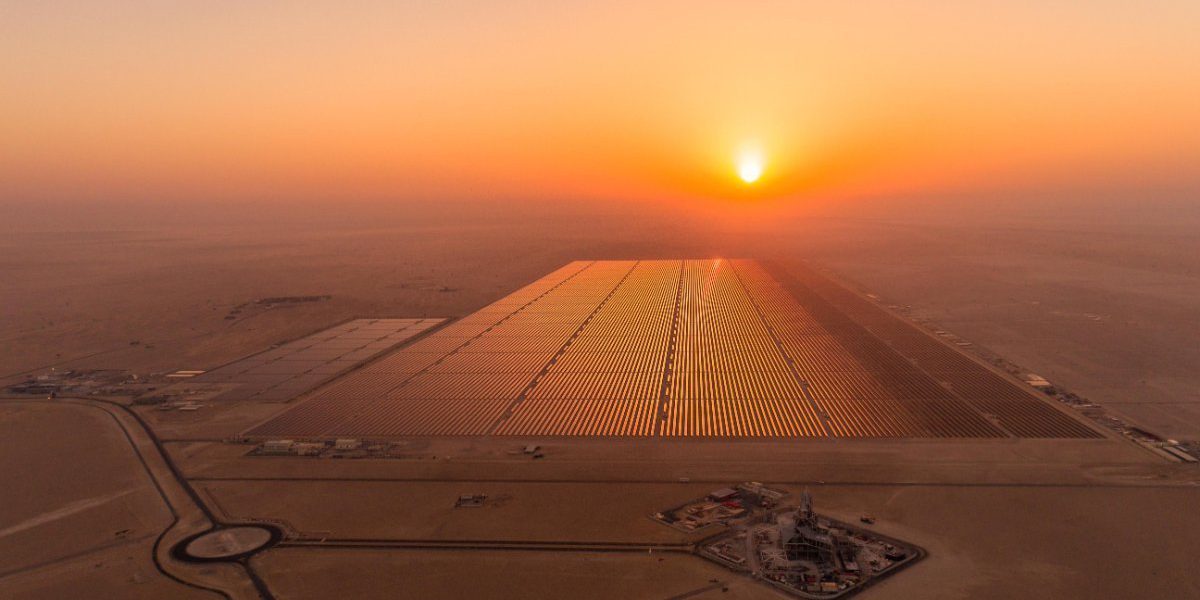The marvel of its time, which impressed the world from Egypt in particular and not from any other place, had to travel nearly 10,000 kilometers across the Atlantic Ocean and through the whole of Europe to reach its final destination in Cairo.
It glittered for a year and then disappeared. But it came back again 101 years later to shine brighter, promising to bring humanity, especially Egypt, out of the dark tunnel to bright horizons, in an amazing realization of a century old prophecy that warns of a successive deterioration on the slope of human barbarism whose heralds have become obvious if that marvel is not activated.
Near noon on Friday, 20 August 1897, the sun seemed brighter in the suburb of Tacony in Philadelphia, a rare phenomenon in that northern part of the United States. In the backyard of a brick building, stood the landlord with his acquaintances and neighbors, carrying a medium-sized box that looked intriguing.
He was a US citizen of German descent called Frank Shuman. He was well-built and he looked tough. His eyes glittered behind his elegant eyeglasses.
He opened the box and took out a small toy. It was a black train. He placed it carefully on a flat spot on the ground. After a few minutes of silent anticipation, the train suddenly started to rumble as if possessed by some spirit.
Of course the train was not possessed nor was it pushed by some engine. It was merely moved by the solar energy that the black paint absorbed in a small container with ether that boils at 35 degrees Celsius. The ether then transformed into steam that pushed the rotation axes of the wheels.
Five years later, that toy changed the notion of burning dirty coal or crude oil. For Shuman decided to build the first solar power plant in the world, transforming the heat of the sun into steam from flammable ether or from water boiling at 100 degrees Celsius.
He chose to build his project in Egypt, not only for its shining sun, but also for its cheap labor.
It wasn’t just a toy
Shuman kept repeating the experiment in the backyard of his house for two years. He had sixty other inventions registered in his name, including laminated safety glass, danger signals for railroad crossings and liquid oxygen to propel submarines.
In 1907, he patented the first low-pressure steam engine working with solar energy, the prototype of which he placed in the backyard to pump water from a nearby lake and store it in large barrels, enough for the whole neighborhood.
Then his German spirit of innovation and American spirit of adventure persuaded him to invest in industry. In 1908, he established the first solar energy company to build large solar power stations. And in 1910, he opened a branch for the company in London and called it ‘The Solar Energy Company in the Eastern Hemisphere’. Then he formed a subsidiary that he called ‘The Limited Shuman Engines Foundation’.
Shuman was thereby trying to get the Britons to invest in his project, as Britain at that time was the biggest colonial power in the world. It was the empire on which the sun never sets. And the sun he was seeking.
The British come in
When Lord Kitchener arrived in Egypt in 1911 to administer Egypt and Sudan, Shuman was preparing to come to Cairo. He had built a pilot solar power plant on 950 square meters in Tacony, comprising 572 one-meter cubic boxes with mirrors to reflect and absorb the sun heat. But the Tacony sun was not hot enough.
And so he sailed to Alexandria from London in 1912, and from there to Cairo, where he began to search for a land plot for his project.
The British and Lord Kitchener in particular were eying the project because they found that it would consolidate their domination of the country. It was a good project that bad intentions wanted to abuse.
And so the project was done under the auspices of Kitchener, the butcher of the Boer War in South Africa.
The British shareholders, who thought the world belonged to them, were keen on generating quick profits from the project. They soon asked Shuman, who started building the project in Maadi, to change the design and let a British professor supervise the new design.
The new design was indeed better. Instead of the original mirrors, long cylindrical mirrors called “parabolic” in engineering terms were placed to reflect the sun rays on tubes stretching horizontally to boil water and turn it into steam. This design is still being used today in giant solar power plants in many parts of the world. Of course today there are electronic sensors that move the mirrors with the movement of the sun in the sky, a process that was done manually with Egyptian hands in Maadi a hundred years ago.
Iron that bears the heat of Egypt’s sun
In the fall of 1912, in the suburb of Maadi that is twenty kilometers from the heart of Cairo, the first industrial station to pump water with solar energy was built. It consisted of 62-meter long and 4-meter wide cylindrical mirrors. The machines and the raw materials came from Tacony and the manpower from Egypt. It was completed by the end of the year.
But the first experiment, which Shuman wanted to make public, was postponed because the boilers melted, as they were made of tin that came from Philadelphia. And so they were replaced by iron tanks that could bear the heat of Egypt’s sun.
In August 1913, and before an audience that included Lord Kitchener himself, the station was operated. The audience was stunned when it saw the giant engine working with a 55 horsepower to pull 2,000 liters of Nile water per minute to irrigate the nearby cotton fields. This persuaded the fascinated Lord Kitchener to allocate 12,000 hectares of cotton plantations in Sudan for solar energy irrigation.
But this technology soon disappeared or was forcibly made to disappear due to greed and silliness.
Extinguishing the sun with oil and uranium
In the fall of 1913, Churchill persuaded the British parliament to buy huge stocks of oil, cheaply of course, for the diesel-powered Navy ships. This was the first attempt to burn oil and use it as fuel for war purposes in the beginning and perhaps also in the end. With this, a great hope in free, clean and continuing solar energy was also burned.
Did Frank Shuman know that this would put an end to his ambition? Maybe. For in the autumn of 1913, he sailed from Alexandria to the land of his German ancestors in Hamburg, where he presented his solar energy project to the German parliament. The Germans liked it and decided to implement it in their colony, what is now called Namibia.
They gave him 200,000 Deutsche marks to build a solar power plant in the warm colony that had no oil, but had uranium, another substance that would extinguish solar energy for nearly a century.
In World War I and World War II oil was the fuel for the ships of fire and destruction. And after the nuclear bombing of Hiroshima and Nagasaki to impose peace with fire and fission, nuclear energy became a source of electricity to illuminate the world of short-sighted men. For now the world began to realize that oil is an impoverished substance that should not have been burned, and that nuclear fission is a dangerous game that should not be played. The search for clean and renewable energy has become inevitable.
Serendipity comes only to those who deserve it
Shuman wrote an article in The Scientific American Magazine in 1914 in which he said: “One thing I am sure of is that the human race should benefit from the direct energy of the sun or it would rebound to barbarism.”
Perhaps this seemed exaggerated back then, but it makes sense today. For the intercontinental wars and the religious or ethnic conflicts that we see today are mostly over energy sources. Oil and uranium are expected to be depleted in 60 to 70 years according to their current rates of consumption. Their soaring prices portend more barbaric conflicts cutting off necks and aerial bombardments of cutters of necks as we see now. Both parties are liars who seek control of oil and gas.
We are surround by internal and external conflicts over energy that we cannot escape from except by developing new energies.
Was it a coincidence that the first solar energy plant was built on our land? Definitely not, because its resources still exist and because serendipity comes only to those who deserve it. Can we use those resources again before we surrender to barbarism?
The marvel that shone on our land a hundred years ago will prevail even if it disappears for another hundred years because we still have God’s gift, the sun.
Here I quote Shuman again when he said: “Engineers, innovators and those with foresight should use this, not only for their own benefit, but for a lasting prosperity for mankind.”
Edited translation from Al-Masry Al-Youm




